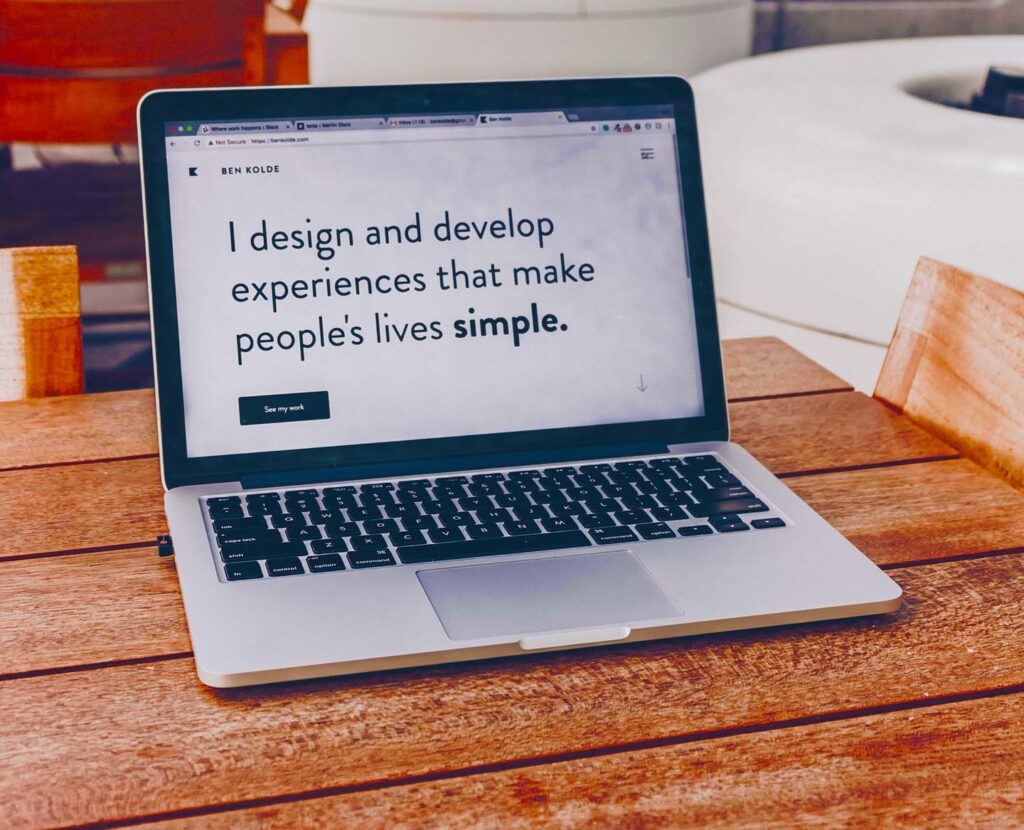Are you a business owner on Long Island looking to establish a strong online presence? Are you aware of the importance of a well-designed website in today’s digital world?
If so, you’ve come to the right place! In this comprehensive article, we will delve into the world of Long Island web design and explore the key factors that contribute to creating beautiful and functional websites. Whether you’re a small local business or a large corporation, understanding the nuances of web design is essential for attracting and engaging your target audience. So, let’s dive in and discover the secrets to successful web design on Long Island!
The Importance of Web Design
In today’s digital age, a strong online presence is crucial for any business seeking success. A well-designed website serves as the virtual face of your brand, acting as a powerful marketing tool that can attract, engage, and convert visitors into loyal customers. It is your digital storefront, representing your brand’s identity, values, and offerings to a vast online audience. Thus, investing in professional web design is a strategic decision that can yield significant returns for your business.
Understanding Long Island Web Design
Long Island, located in the state of New York, is a vibrant and competitive business hub with a thriving local economy. To stand out in this dynamic market, businesses need websites that not only look visually appealing but also effectively communicate their unique value proposition. Long Island web design involves creating websites tailored to the needs and preferences of the local audience while incorporating the latest design trends and best practices. A skilled web design agency with expertise in the Long Island market can help businesses achieve their online objectives and surpass their competition.
Elements of Effective Web Design
To create a website that truly resonates with your target audience, it’s important to consider the following elements of effective web design:
1. Responsive Design: Ensuring Accessibility Across Devices
In today’s mobile-driven world, it’s essential to optimize your website for various devices and screen sizes. Responsive web design ensures that your site adapts seamlessly to desktops, laptops, tablets, and smartphones, providing a consistent and user-friendly experience. By employing responsive design techniques, your website will automatically adjust its layout, font sizes, and images to suit different devices, allowing visitors to access your content conveniently and without any compromise in quality.
2. Visual Appeal: Captivating Visitors with Engaging Design
First impressions matter, especially in the online realm. A visually appealing website design captures visitors’ attention and encourages them to explore further. An aesthetically pleasing color scheme, visually appealing images, and thoughtfully selected typography can enhance the overall look and feel of your website. By leveraging compelling visuals, you can create an emotional connection with your audience, conveying professionalism, credibility, and trustworthiness.
3. Intuitive Navigation: Guiding Users Seamlessly
Efficient and intuitive navigation is crucial for providing a smooth user experience. Visitors should be able to find the information they seek without confusion or frustration. Clear navigation menus, breadcrumbs, and search functionality facilitate easy exploration and ensure that users can navigate through your website effortlessly. Well-structured navigation also improves the overall accessibility of your site, allowing search engines to crawl and index your pages effectively.
4. Compelling Content: Communicating Your Message Effectively
Beyond aesthetics, the content of your website plays a pivotal role in engaging visitors and converting them into customers. Compelling and persuasive copywriting that conveys your brand’s unique selling propositions, key benefits, and calls to action is essential. Tailoring your content to resonate with your target audience on Long Island will help establish a sense of connection and relevance. Incorporating high-quality images, videos, and testimonials further strengthens your message and adds credibility to your offerings.
5. User Experience: Enhancing Engagement and Retention
User experience (UX) is a critical aspect of web design that focuses on creating a positive and enjoyable interaction between visitors and your website. By prioritizing UX, you ensure that users have a seamless and satisfying experience while navigating your site. This includes fast loading times, easy-to-use forms, clear and concise error messages, and strategic placement of important information. A well-designed user interface (UI) that aligns with UX principles ensures that visitors can easily accomplish their goals and encourages them to spend more time on your site.

See How I Can Help Build Your Long Island Business A Website That Wows Customers.
- Custom Web Design: 100% bespoke design matching the personality of your local business & tailored toward your goals.
- SEO – unlock more SEO traffic. See real results.
- eCommerce – Websites that drive sales, offer ease of management, and are scalable when you are ready to grow.
Long Island Web Design Trends
Web design is a constantly evolving field, influenced by changing technologies and user preferences. Staying up to date with the latest trends can help your website stand out and leave a lasting impression on visitors. Here are some noteworthy trends in Long Island web design:
1. Minimalism: Embracing Simplicity
Minimalistic web design focuses on simplicity, clarity, and removing unnecessary clutter. By embracing clean lines, ample white space, and minimalistic color schemes, you can create a sleek and modern look for your website. Minimalism enhances readability, draws attention to key elements, and allows your content to shine.
2. Microinteractions: Adding Delightful Details
Microinteractions are subtle animations or visual cues that engage users and enhance their overall experience. These can be interactive buttons, hover effects, or progress indicators that provide feedback and guidance. By incorporating micro-interactions, you can add a touch of interactivity and playfulness to your website, delighting visitors and encouraging them to interact with your content.
3. Bold Typography: Making a Statement
Typography plays a crucial role in web design, and using bold and attention-grabbing fonts can create a strong visual impact. By carefully selecting unique and expressive typefaces, you can convey the personality of your brand and make a memorable impression. Bold typography can be used to highlight key messages, headings, or calls to action, drawing the reader’s attention and guiding them through the content.
4. Video Backgrounds: Engaging Visitors with Motion
Video backgrounds have gained popularity in web design as they provide an immersive and captivating experience. By using carefully selected videos that align with your brand’s story and aesthetics, you can create a visually dynamic backdrop for your website. Video backgrounds can be particularly effective for showcasing products, demonstrating services, or conveying a specific atmosphere or emotion.
5. Mobile-First Design: Prioritizing Mobile Users
With the increasing dominance of mobile devices in web browsing, it’s crucial to prioritize mobile users when designing your website. Mobile-first design involves creating a website with a mobile-friendly layout and features, ensuring optimal performance and usability on smartphones and tablets. By catering to the needs of mobile users, you can deliver a seamless experience regardless of the device being used, thereby maximizing engagement and conversions.
The Process of Long Island Web Design
Creating a successful website requires a systematic approach that encompasses various stages. The web design process typically includes the following steps:
1. Planning and Research: Setting the Foundation for Success
Before diving into the design and development phases, it’s essential to understand your business goals, target audience, and unique selling propositions. Conducting thorough market research and competitor analysis helps identify key differentiators and areas of opportunity. This information forms the foundation for the subsequent stages of the web design process.
2. Wireframing and Prototyping: Visualizing the User Journey
Wireframing involves creating a visual representation of the website’s structure, layout, and navigation. It helps determine the placement of key elements and ensures a logical flow of information. Prototyping takes wireframing a step further by adding interactivity and functionality, allowing you to test and refine the user experience before proceeding to the design and development stages.
3. Graphic Design: Creating Stunning Visuals
The graphic design phase focuses on the aesthetics of your website. Skilled designers will create visually appealing layouts, select color palettes, and incorporate imagery that aligns with your brand identity. They will pay attention to visual hierarchy, ensuring that important elements stand out while maintaining a cohesive and harmonious design.
4. Front-End Development: Translating Designs into Code
Front-end development involves translating the visual design into a functional website using HTML, CSS, and JavaScript. Developers write clean and efficient code to bring the design to life, ensuring cross-browser compatibility, responsiveness, and accessibility. This stage focuses on creating an interactive and engaging user interface that aligns with the design vision.
5. Back-End Development: Building a Robust Infrastructure
Back-end development involves building the infrastructure and functionality that powers your website. This includes server-side scripting, database integration, and content management system (CMS) implementation. Skilled developers work to ensure a secure, scalable, and efficient back-end architecture that supports your website’s functionality and future growth.
6. Testing and Optimization: Ensuring Quality and Performance
Once the website is developed, rigorous testing is conducted to identify and fix any issues or bugs. This includes checking for cross-browser compatibility, responsiveness, and performance optimization. Testing also involves user acceptance testing (UAT) to ensure that the website meets the desired user experience and functionality requirements. Optimization techniques, such as image compression and code minification, are applied to improve page load times and overall performance.
Choosing the Right Long Island Web Design Agency
Selecting the right web design agency is crucial for the success of your project. Here are key factors to consider when choosing a Long Island web design agency:
1. Assessing Experience and Expertise
Evaluate the agency’s experience in the field of web design, specifically in the context of Long Island. Look for agencies with a proven track record of delivering high-quality websites for businesses in the local market. An experienced agency will understand the unique challenges and preferences of Long Island customers and can tailor their designs accordingly.
2. Reviewing Portfolios and Case Studies
Examine the agency’s portfolio to get a sense of its design style, creativity, and versatility. Look for websites they have developed for businesses similar to yours or within your industry. Case studies can provide insights into the agency’s approach, problem-solving skills, and the results they have achieved for their clients.
3. Checking Client Testimonials and Reviews
Read testimonials and reviews from past clients to gauge their satisfaction with the agency’s services. Positive feedback and client recommendations are indicators of a reliable and trustworthy agency. Additionally, you can reach out to their previous clients directly to gain more detailed insights into their experience working with the agency.
4. Inquiring About Pricing and Packages
Discuss the agency’s pricing structure and packages to ensure they align with your budget and project requirements. Clarify what is included in their services, such as design revisions, content creation, and ongoing support. A transparent and comprehensive pricing model will help you avoid any surprises or hidden costs down the line.
5. Evaluating Customer Support and Communication
Effective communication and responsive customer support are crucial throughout the web design process. Evaluate the agency’s communication practices, including their response times, availability for meetings, and the designated point of contact for your project. A reliable agency will prioritize clear and timely communication to ensure a smooth and collaborative working relationship.
FAQs About Long Island Web Design
What is the role of responsive design in web development?
Responsive design ensures that websites adapt to different devices and screen sizes, providing an optimal user experience across desktops, laptops, tablets, and smartphones. It allows users to access and interact with your website seamlessly, regardless of the device they are using.
How long does it typically take to design a website?
The duration of web design projects varies depending on factors such as the complexity of the website, the number of pages, and the availability of content. On average, a website design project can take anywhere from several weeks to a few months to complete.
What should I consider when selecting a color scheme for my website?
When choosing a color scheme, consider your brand identity, target audience, and the emotions you want to evoke. Different colors have varying psychological effects, so it’s important to select colors that align with your brand personality and resonate with your target audience.
Can I update my website’s content myself?
Many web design agencies provide content management systems (CMS) that allow you to update and manage your website’s content independently. With a user-friendly CMS, you can easily make changes to text, images, and other elements without the need for technical expertise.
What is the importance of search engine optimization (SEO) in web design?
Long Island SEO helps your local business rank higher in search engine results, increasing its visibility and attracting organic traffic. Web design elements, such as optimized page structure, meta tags, and keyword placement, contribute to improving your website’s search engine rankings and driving targeted traffic to your site.
How can I ensure my website is secure from cyber threats?
To ensure website security, it’s important to implement robust security measures such as SSL certificates, regular software updates, strong passwords, and firewall protection. Working with a reputable web design agency can ensure that your website is built with security best practices in mind.
Conclusion
In conclusion, investing in a professionally designed website for your Long Island business is a strategic move that can elevate your online presence and drive business growth.
Building an impactful website that drives leads is a multifaceted process that requires expertise, creativity, and a deep understanding of your target audience. When partnering with a reputable web design agency, make sure you choose one that can not only create a visually stunning and highly functional website but also understands the Long Island market and local customers.



